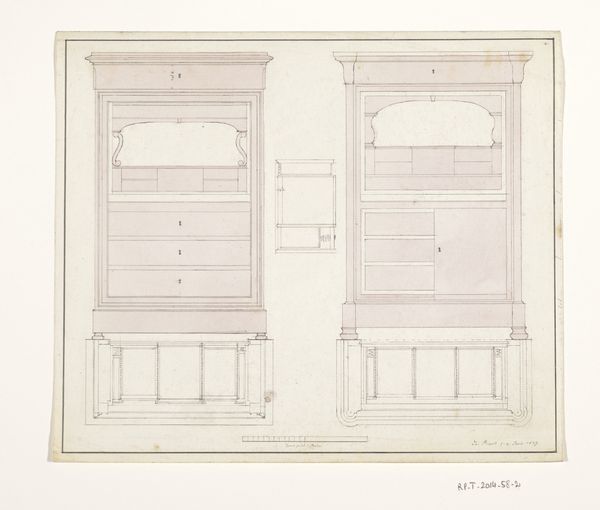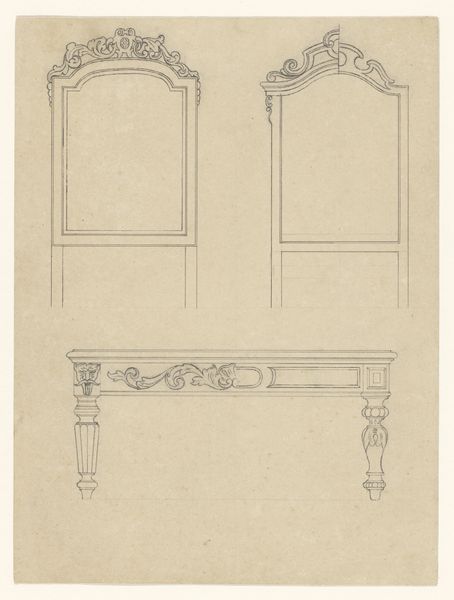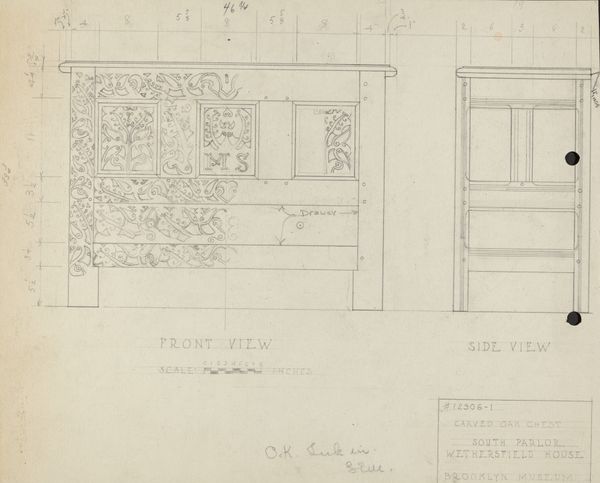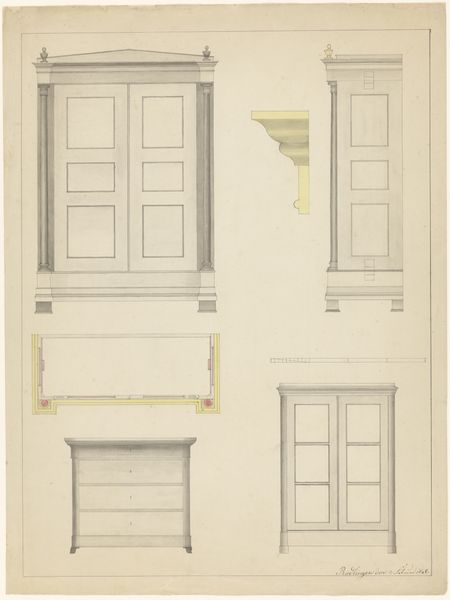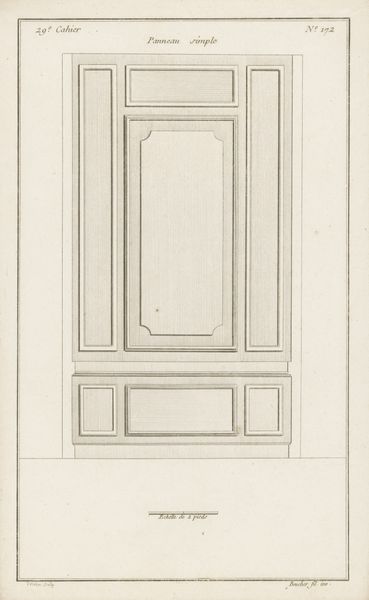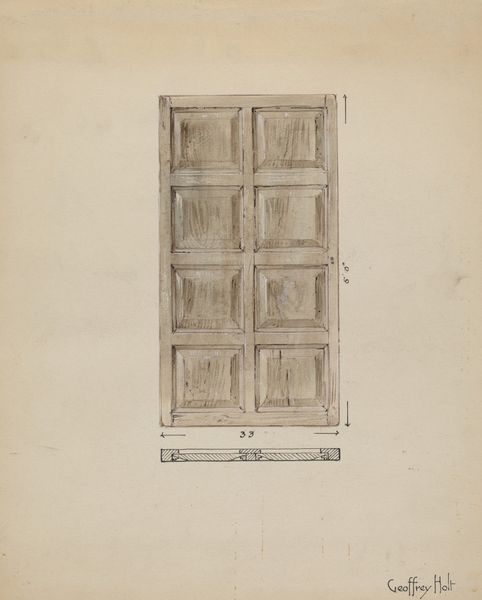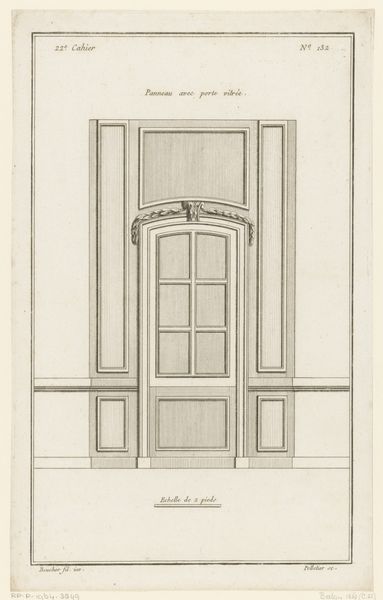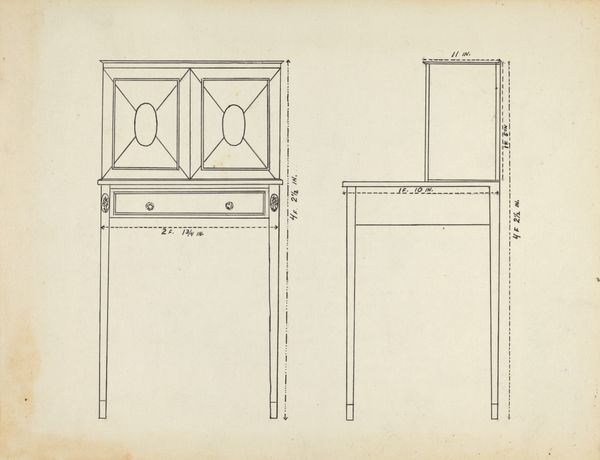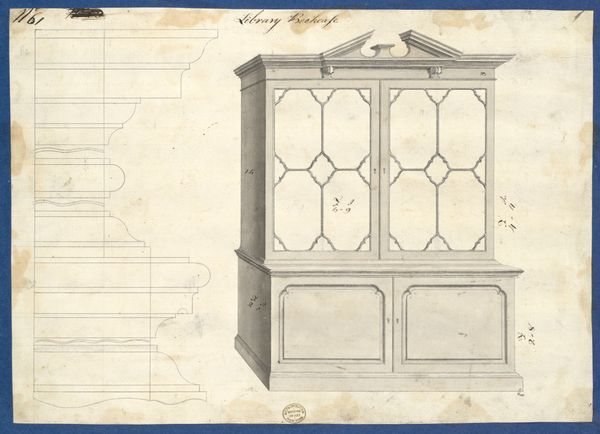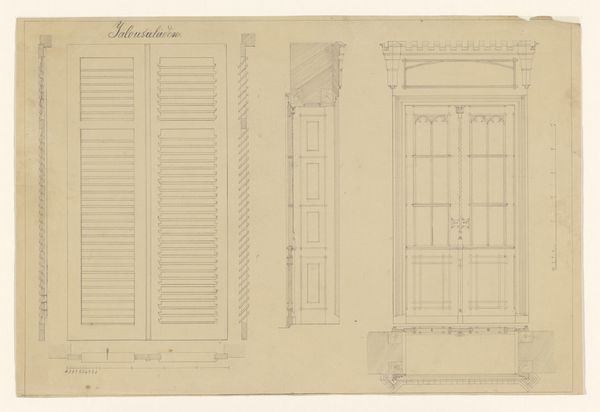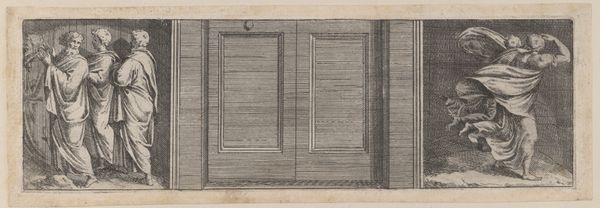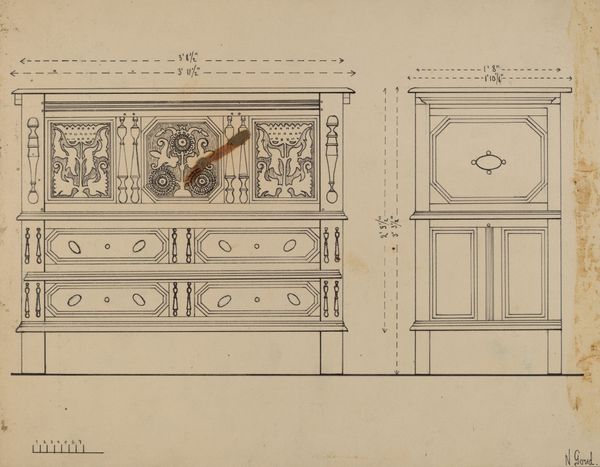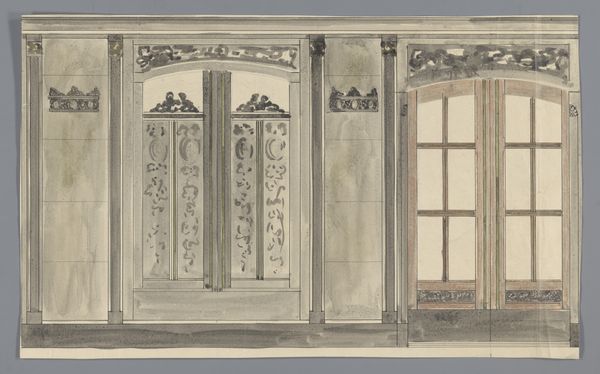
drawing
#
drawing
#
geometric
#
line
#
realism
Dimensions: overall: 21.7 x 26.9 cm (8 9/16 x 10 9/16 in.) Original IAD Object: 54"high, 44"wide, 16 3/4"deep.
Copyright: National Gallery of Art: CC0 1.0
Curator: This piece, entitled "Cupboard," dates back to around 1937 and comes from the hand of Jack Bochner. It's a drawing that really emphasizes line work and geometric forms to present what looks like a meticulously planned cabinet. Editor: It feels…stark. Almost industrial in its precision. Seeing these lines, you immediately feel a sense of order and maybe a bit of constraint. There is such rigidity of its design; it would almost look painful to use. I’m so curious: who might have dreamed of owning something like this, and what needs of theirs would it meet? Curator: That rigidity is definitely a strong aspect of the overall impression. It almost feels like a blueprint, doesn’t it? Not just showing the exterior, but revealing the architectural structure and what’s “underneath the skin.” Editor: Absolutely. It prompts a kind of archaeological thinking. I immediately start wondering about Bauhaus, the socio-political conditions of furniture design at the time... It feels like this is commenting on or emerging from that. Given that it’s a “Cupboard”, a seemingly mundane item elevated, I can’t help but think about questions of gender roles, like who gets saddled with the work of tending to these spaces and how they are forced to engage in that labor within constricted and unforgiving conditions. Curator: That's fascinating! Thinking about it within that context really changes how I perceive it. You start imagining who might inhabit the space around it. The austerity almost screams for someone to fill it with colorful and unexpected things, anything to soften the rigidity! Perhaps to subvert the order a little. Editor: It almost yearns to be in dialogue with a playful sensibility that is not reflected in this kind of hyper-realistic form, almost daring someone to challenge its seriousness. That, to me, becomes its beauty. Curator: Well, thank you for making me reconsider the implications embedded in those lines and angles. I think I am beginning to see "Cupboard" in an entirely different way now. Editor: The beauty of art is really in that transformative possibility, isn’t it? Hopefully others find these hidden potentials to see art beyond its immediate forms and contexts.
Comments
No comments
Be the first to comment and join the conversation on the ultimate creative platform.
